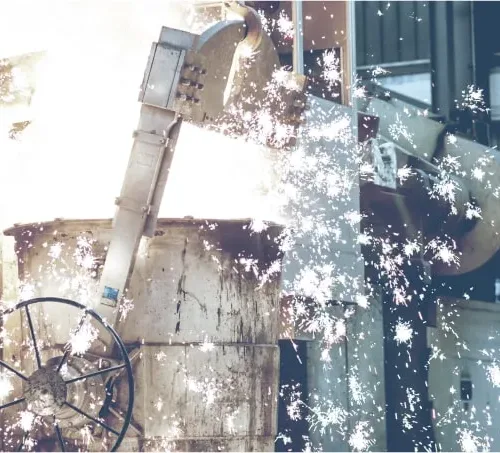The most obvious time saving is the complete skipping of model construction thanks to the model-free “printed casting” process. This means that lead times of four weeks (for simple parts) to four to five months (for complex components) can be saved in one fell swoop.
But it is also quicker afterwards. The design of the mould and core package is created in no time at all based on the CAD file of the component and can be revised and optimized at any time within a few hours.
The construction of the mold is also faster and easier because many of the problems of the traditional process with a model are eliminated by printing the sand mold directly.
No division of the mold, no draft angles; undercuts and complex contiguous cavities are no problem.
The degrees of freedom offered by 3D printing often make it possible to create complex shapes and cores that would normally have to be made in several parts in one piece, which also saves time and reduces manual intermediate steps.
Depending on the size of the printer, the sand molds are printed in a few hours, overnight or within a day.
After removing any loose sand from the molds, they are assembled if necessary and are then immediately ready for casting.
The digital and highly flexible process makes it possible to print molds for individual pieces or very small batches together in mixed batches and then to integrate them just as flexibly into the foundry’s subsequent production flow.
This creates immense agility in the procurement of cast parts and opens up new production capacities in foundries – for example, because the printer can produce molds unattended overnight. This allows foundries to meet seemingly impossible deadlines when things are particularly urgent, as production is completely transparent and digitally manageable.
The sand mold from the 3D printer is created based on the CAD file of the workpiece and precisely reproduced by the sand printer. By eliminating mold chamfers and other model making requirements, the resulting cast part is very close to the final workpiece geometry and contour, which reduces the amount of post-processing required.

Printed castings are not only faster out of the starting blocks. The 3D sand printing process accelerates cast part production in several areas. From the iterative optimization of the component and mould design and the integration of mould components into a single piece, to reduced post-processing – 3D sand printing enables a sprint from CAD file to finished component in days or a few weeks, not months. And testing is also faster, thanks to the online calculator and digital ordering process.
Calculate instant quote
Share the Post: